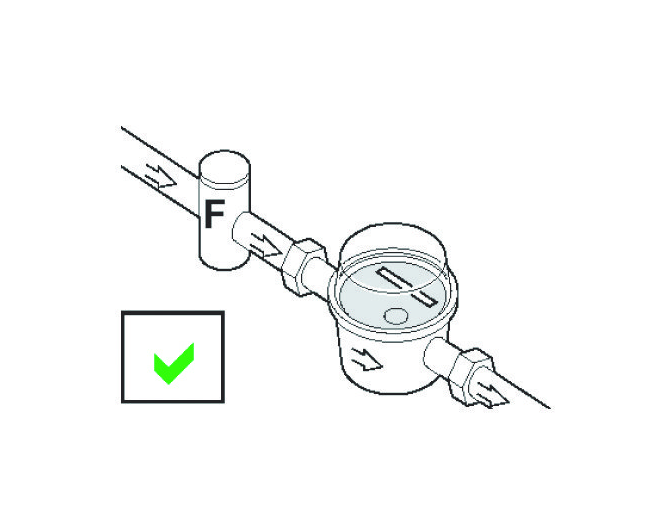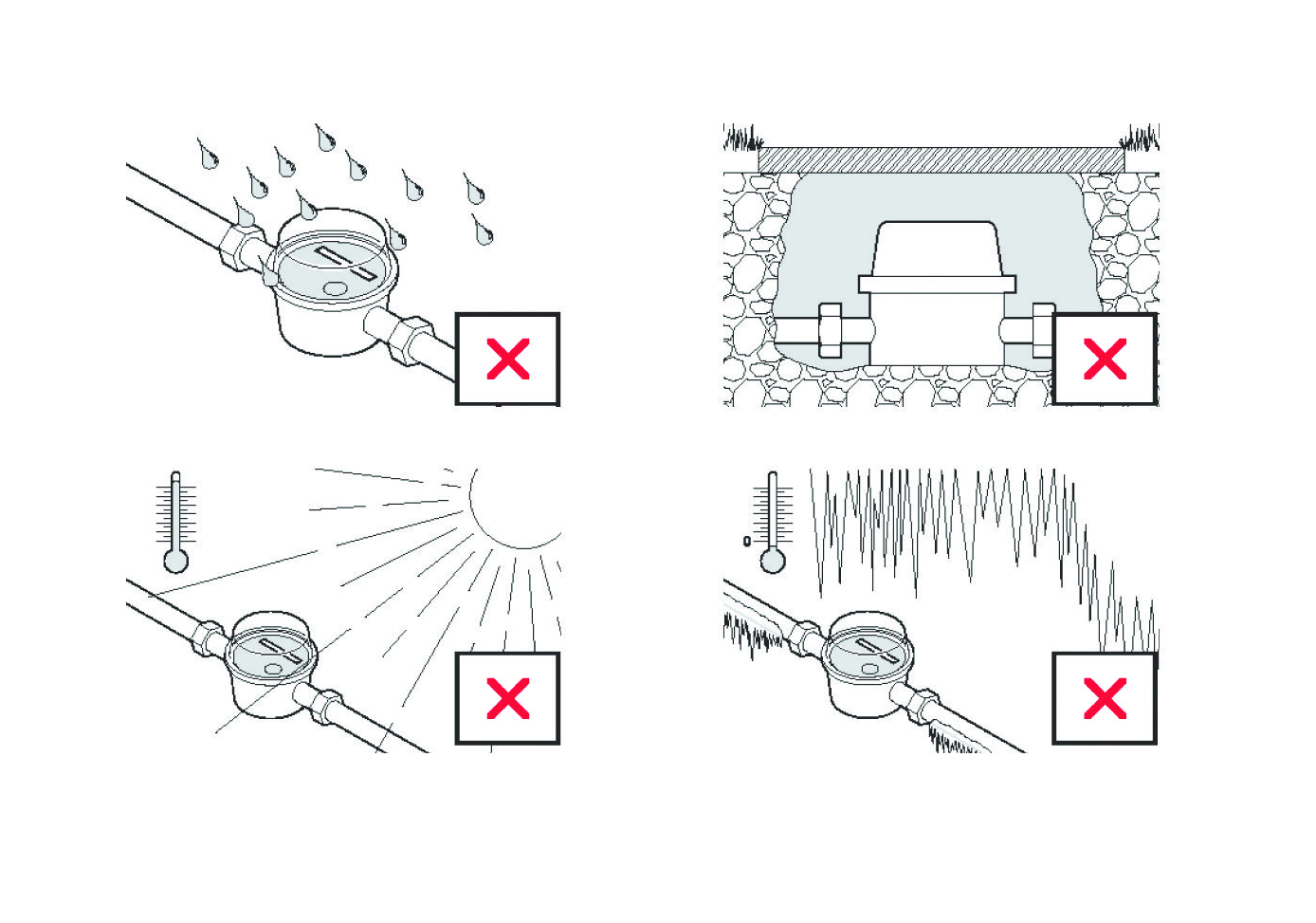WATER METER GUIDELINES
General Terms of Reference and Sizing
- Maximum flow is only for use in emergencies, for about 1-2 minutes as it causes the bearings to overheat.
- Minimum flow only refers to the minimum flow required to operate and record on the meter. At these very low flows, the meter will not be accurate .
- All water meters should be sized between transitional flow (the point at which the meter is accurate) and nominal flow (everyday flow rate). Never use maximum flow as a basis for sizing the meter.
Filtration - The meters are designed only for use with clean water. A filter is always recommended up stream of the meter if there are any concerns. This filter should also have straight pipe of at least 10x diameters of the pipe from the meter to allow the flow to settle again. For example, a DN25 (1") meter would need 250mm (10") between the filter and the meter.
Insatallation
- The preferred mounting position is horizontal with the dial facing upwards. Not to be mounted vertically. Never put the meter upside down or canted on its side as it will not function correctly.
- Water meters should always be fitted with a minimum of 10x pipe diameter both up and down stream. For example, a2" (Dn50) water meter would have 20" (500mm) either side of the meter as straight pipe. This is to ensure accurate reading by reducing water turbulence. At higher pressures (above 8bar), this should be increased to 10x pipe diameter.
- Note that there is a direction of flow arrow on the meter. Also, that the meter has the size in mm on one side and the maximum flow on the other in metres cubed per hour. Remember that the meter must only be used for half of this maximum flow for constant use, maximum flow only being used for short periods of 1-2 minutes.
- It is recommended as good practice to fit a removeable filter element before a water meter to protect the mechanism.
- Only clean water should be used that does not exceed the temperature specification of the meter.
TEMPERATURE SPECIFICATION IS 30°C FOR COLD METERS AND 90°C HOT METERS
Certain inhibitors used in heating systems can damage the meter body, mechanism or the seals. This damage could cause leaks or failure of the meter. - When installing the reed switch (pulsed output wire), the distance from the meter to the control unit/pulse counter is best kept under 20 metres as voltage will drop. The reed switches are normally open, volt free,but operate on the 0-24VDC range when the pulse is made. A magnet on the water meter will close the switch to form the circuit when the designed pulse for that meter is reached. This then sends a signal to the control unit/pulse counter. The two wires that leave the pulse cable attached to the meter are not polarity sensitive.
Location
Water meters should never be installed where there is a risk of water ingression, for example, underground or exposed to the elements at any time. Additionally, they should not be exposed to extremes of temperature. Like any other fitting, freezing can damage the dial mechanism and crack the meter body. Meters should always be protected from these risks.








